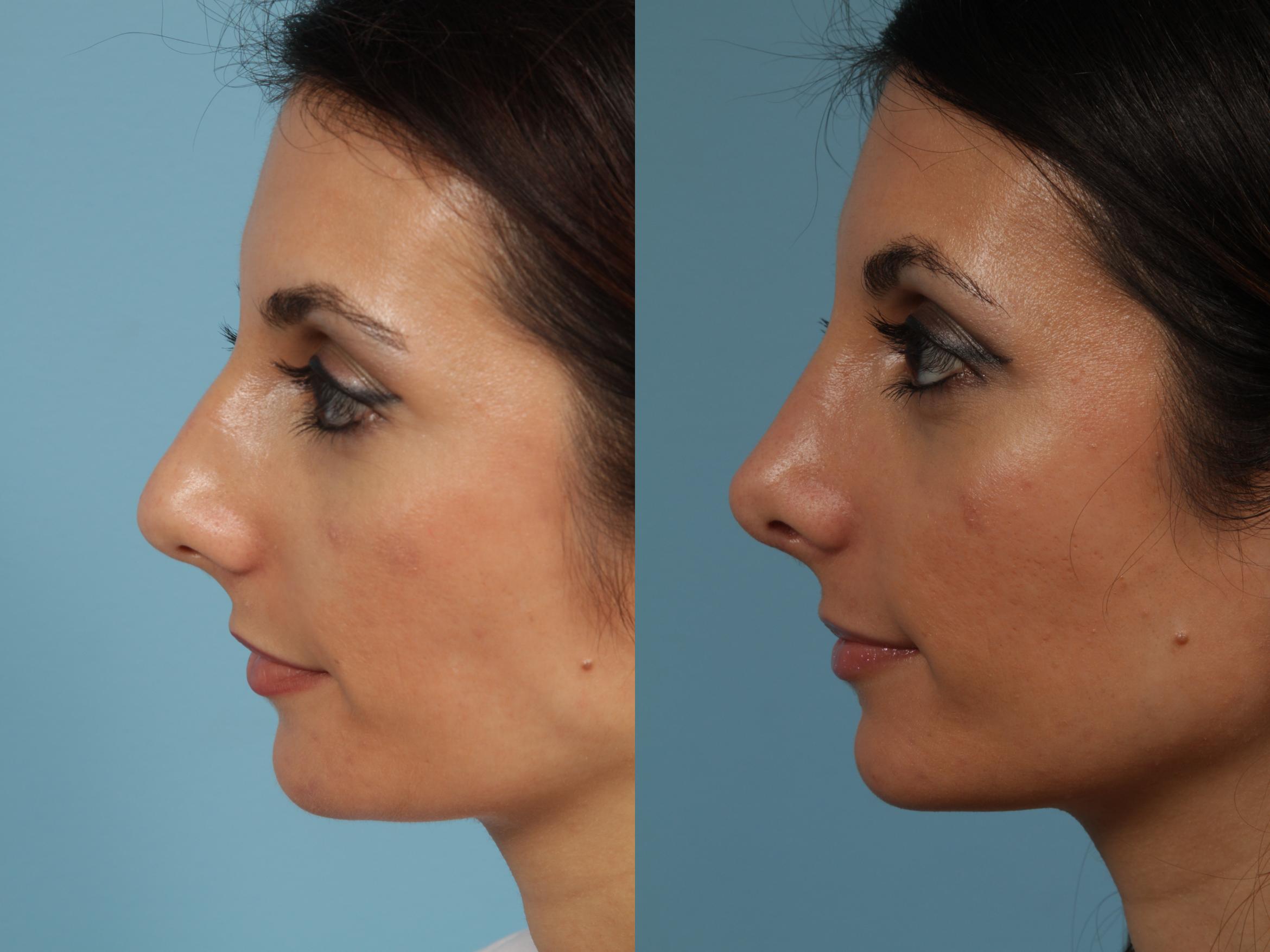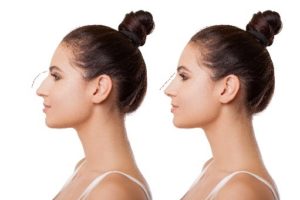Our Austin Rhinopasty Surgeon Ideas
Table of ContentsThe 8-Minute Rule for Rhinoplasty Austin TxThe Main Principles Of Austin Rhinopasty Surgeon The smart Trick of Austin Rhinopasty Surgeon That Nobody is Discussing
Based upon the offered area of nasal skin, the surgeon chooses the place for the bilobed flap, and orients the pedicle. If the defect is in the lateral aspect of the nose, the pedicle is based medially. If the defect is at the nasal pointer, or at the nasal dorsum, the pedicle is based laterally.

The external semi-circle specifies the needed length of the 2 lobes of the skin flap. The inner semi-circle bisects the center of the original wound, and continues across the donor skin, developing limitation step of the pedicle typical to the two lobes of the flap. The cosmetic surgeon then draws two lines from the apex of the injury; the very first line drawn is at an angle of 45 degrees from the long axis of the wound, and the second line drawn is at a 90-degree angle from the axis of the wound.
The delineation of each of the 2 lobes of the flap begins and ends at the inner semi-circle, and encompasses the outer semi-circle, to the point where it converges its central axis. The width of the very first lobe is around 2 mm narrower than the width of the injury; the width of the 2nd lobe is approximately 2 mm narrower than the width of the first lobe.
The injury is deepened, down to the nasal skeleton, to accommodate the tissue thickness of the bilobed flap (rhinoplasty surgeon austin). Technically, cutting the wound, expanding it, is more suitable, and safer, than trimming (thinning) the flap to fit the wound. Weakening the donor site for the second lobe allows closing it mainly; it also gets rid of excess-skin "dog-ears" at the donor site.
II. Nasolabial flap In the 19th century, the surgical methods of J.F. Dieffenbach (17921847) popularized the nasolabial flap for nasal reconstruction, for which it remains a foundational nose surgical treatment treatment. The nasolabial flap can be either superiorly based or inferiorly based; of which the superiorly based flap is the more practical rhinoplastic application, since it has a more versatile arc of rotation, and the donor-site scar is inconspicuous.
The Basic Principles Of Rhinoplasty Austin Tx
The blood supply for the flap pedicle are the transverse branches of the contralateral angular artery (the facial artery terminus parallel to the nose), and by a confluence of blood vessels from the angular artery and from the supraorbital artery in the median canthus, (the angles formed by the meeting of the upper and lower eyelids) (austin rhinopasty surgeon).
The nasolabial flap is a random flap that is emplaced with the proximal (near) portion resting upon the lateral wall of the nose, and the distal (far) part resting upon the cheek, which consists of the main angular artery, and so is perfused with retrograde arterial circulation. Surgical technique the nasolabial flap The pedicle of the nasolabial flap rests upon the lateral nasal wall, and is shifted a maximum of 60 degrees, in order to avoid the "bridge effect" of a flap emplaced throughout the nasofacial angle.
The shape of the skin flap is cut from the injury template produced by the surgeon. An incision check out this site is made to the flap (without an anaesthetic injection of epinephrine), which then is raised and oriented, in an inferior-to-superior instructions, in between the subcutaneous fat and the muscle fascia. The cutting continues till the skin flap can be easily transposed upon the nasal problem.
The flap then is bent back (shown), and can be thinned (cut) under loupe magnification; however, a nasolabial flap can not be thinned as easily as an axial skin-flap. austin rhinopasty surgeon. After the nasolabial flap has been emplaced, the flap donor-site injury is sutured closed. For an injury of the lateral nasal wall that is less than 15 mm wide, the flap donor-site can be closed mostly, with stitches.

Such dangers are prevented by advancing (moving) the skin of the cheek towards the nasofacial junction, where it is sutured to the deep tissues. Additionally, a narrow wound, less than 1 mm wide can be permitted to recover by secondary objective (autonomous re-epithelialisation). III. The paramedian forehead flap The paramedian forehead flap is the premier autologous skin graft for the reconstruction of a nose, by replacing any of the aesthetic nasal subunits, specifically concerning the problems of various tissue thickness and skin color.
Limited length is an useful application limit of the paramedian forehead flap, especially when the client has a low frontal hairline. In such a patient, a little portion of scalp skin can be consisted of to the flap, but it does have a various skin texture and does continue growing hair; such mismatching is avoided with the transverse emplacement of the flap along the hairline; yet Read Full Article that portion of the skin flap is random, and so runs the risk of a greater incidence of necrosis.
How Austin Rhinopasty Surgeon can Save You Time, Stress, and Money.
Nonetheless, the second stage of the nasal reconstruction can be carried out with the client under local anaesthesia. Aesthetically, although the flap donor-site scar heals well, it is noticeable, and hence tough to hide, especially in guys. Nose surgery: A paramedian forehead flap style. Surgical strategy the paramedian forehead flap The cosmetic surgeon creates the paramedian forehead flap from a custom-fabricated three-dimensional metal foil design template stemmed from the procedures of the nasal defect to be corrected.
Later on, the distal one-half of the flap is dissected and thinned to the subdermal plexus. The cosmetic surgeon produces a metal foil design template derived from the dimensions of the nasal injury. Applying a Doppler ultrasonic scanner, the surgeon determines the axial pedicle of the tissue-flap (made up of look at this site the supraorbital artery and the supratrochlear artery), typically at the base, next to the medial brow; the point normally is between the midline and the supraorbital notch.